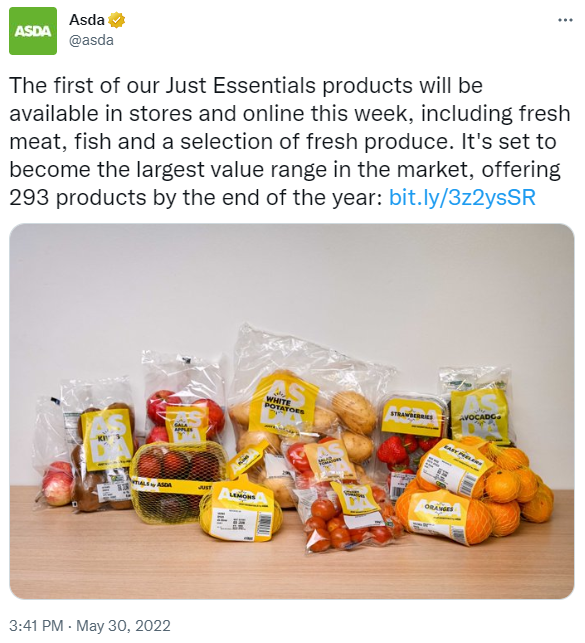Category:
Podcast
Series:
#2
Episode:
#1
Date:
January 2023
Stream on Spotify
The state of retail heading in 2023.
2022 was a tough year for both consumers and retailers.
The fallout from the pandemic continued: from worldwide economic pressures, to global supply chain disruption. Russia invaded Ukraine – and the price of food, energy and fuel skyrocketed.
As we move into 2023, we’re hearing predictions of an impending recession; rising interest rates; job losses, and further strike action across several key industries.
Critically for the retail sector, we’re seeing a cut back in consumer spending power. 92% of adults in the UK reported an increase in their cost of living at the end of 2022. Consumer confidence is close to record lows. The cost of living crisis isn’t over yet.
But what does all this mean for retailers? In this two-part series, we’ll examine six of the major trends impacting retailers in 2023 and beyond.
1) The cost of living’s going up.
Let’s start with the widely documented cost of living crisis.
Retailers failed to benefit from a post-lockdown boost in UK high street activity in 2022, after soaring energy bills and the cost of living crisis forced households to rein in their spending.
Despite an increase in transactions (5%), Barclaycard spend data for 2022 revealed retail spending fell by 0.8% versus 2021.
So, how can retailers navigate the cost of living crisis in 2023?
The rise of the consumer champion.
There’s no doubt about it, the rising rate of inflation has been impacting on sales. Many retailers have been taking cost pressures and cost price increases and passing them onto the consumer.
As 2023 progresses, retailers will be fighting for consumer budgets, so the key is to understand where you can and can’t pass on costs to customers – to protect sales and margin. Data science can help with this – by understanding price sensitivity across your product portfolio.
There are other considerations when it comes to adjusting prices, though.
Consumer champions matter – and retailers need to take notice. We’ve already seen figureheads like Martin Lewis rise in popularity over recent years, on account of impartially helping consumers navigate rising interest, energy, and food prices.
We see 2023 as an opportunity for retailers. It’s an opportunity to become a consumer champion – especially for basic goods. Over the coming year, we predict retailers will protect prices for the goods consumers need on a day-to-day basis (think milk, bread, cheese, toilet roll), whilst raising the prices of discretionary purchases (like boxed chocolates, candles, homeware). All these pricing decisions can be made with data.
Reinventing basic ranges.
In an inflation and recession-based economy, consumers tend to buy the basics at the lowest possible cost. Over the years, we’ve seen brands adapt their product propositions so they can provide a more affordable line of products for consumers. For example, Asda’s recently reinvented ‘Just Essentials’ range really caught the imagination of its customers. We’ve also seen John Lewis’ Everyday range thrive since launching in 2021.

So, how can retailers identify whether there’s an opportunity to introduce a value range for their customers?
In the grocery world, for example, retailers have lots of data about how consumers respond to price over time. Many grocery products are persistent over time – so when prices increase, it’s easy to see where price matters (ie customers stop buying the product) and where it doesn’t (ie customers continue buying it). However – it all comes back to what customers ‘need’. If the price of milk, for example, increases, customers will still buy it. Why? Because they need it.
Retailers need to take care not to punish customers for the things they need. This is where a value range comes in – and data really matters.
Data science helps retailers identify products customers need, then balance prices to make sure they’re protecting consumers’ budgets where it really matters – whilst also impacting retailers’ overall profit delivery and margin.
2) We’re seeing the collapse and consolidation of retailers.
Over 17,000 shops closed their doors in 2022.
Some businesses have taken the opportunity to buy and consolidate retailers and brands into their portfolio. For example, British retailer Next bought struggling brands Made.com and Joules in 2022, whilst Frasers has purchased numerous retailers over the years – including Flannels in 2017, Jack Wills in 2019 and Missguided in 2022.
So how can retailers succeed against a constantly changing backdrop?
It’s all about ease, speed and value.
Ultimately, retailers need to leverage customer data to succeed. Customer experiences are more important than ever – especially across three key areas:
Ease.
Retail experiences should be seamless and frictionless. For example, retailers can use techniques like personalisation and range optimisation to improve product sort order – rather than stacking hundreds of products on a website for customers to painstakingly sift through.
Speed.
Customers should be able to find what they’re looking for – quickly. Retailers can use AI and data-driven product attributes and tagging to help customers speedily navigate their website.
Value.
Retailers should provide customers with value for money. Have you benchmarked your products against the competition? If you’re a luxury brand, what’s your differentiated value proposition? If you’re a value brand, are your prices truly competitive?
Retailers need to inspire customers – and they can do that using first party data. Working with data intelligently can tell a retailer which products to stock in store and online; how to price ranges; and which customers to show products to.
Thread was a great example of this. Before going into administration at the end of 2022, Thread was a pioneer in intelligently leveraging data and product attributes in the fashion market. They used customer data, such as size, fit and clothing brand preferences, and appended style attributes to make personalised recommendations. Marks and Spencer acquired Thread’s brand, technology and data, so it’ll be interesting to see how much capability they take on and land.
3) Retail media: A new path to retail profit.
The retail media market is seeing major growth. BCG estimated it’s growing 25% year-on-year – up to an estimated value of $100 million by 2027.
Retail media involves brands buying advertising space across a retailer’s digital and physical owned and 3rd party properties. Brands use data to connect with consumers at a critical point in the buyer journey.
Amazon’s a prominent example of retail media in action – according to Digiday.com, Amazon’s ad business earned $9.5B in Q3 alone.
So, why is retail media gaining traction?
Third party cookies are crumbling.
Google’s phasing out third-party cookies by the end of 2024, alongside a host of competitor web browsers. This will have a profound effect on digital advertising and the way retailers reach customers.
With this in mind: in the retail media era, taking control of your first party data is more important than ever. Once retailers can leverage first party data, retail media has the potential to become a profitable revenue stream.
We’re already seeing grocery retailers make leaps and bounds with retail media. But it’s not reserved for multi-brand retailers – there’s also an opportunity for the high street. For example, what’s stopping McDonald’s from working with Primark to share a 20% off code at the end of a digital screen or app transaction? Encouraging customers to go on to visit a highly affined retailer also sparks high street footfall.
Think about the value exchange.
First party data has a value.
And more importantly – consumers recognise this. There needs to be a compelling reason for customers to share their data with a retailer. For example, Tesco Clubcard gives customers discounts in exchange for shopping data.
However, retailers need to be careful not to exploit this value exchange. Retail media adverts should be relevant and personalised to the individual – think offers based on basket affinity or purchase history.
Now’s the time to start building first party data, using compelling value exchanges – to move away from reliance on third party media campaigns.
Is 2023 the year you invest in your data science and AI capability? We’re here to advise on pricing, improving customer experiences, setting up a retail media network and everything in between. Contact us to chat.



